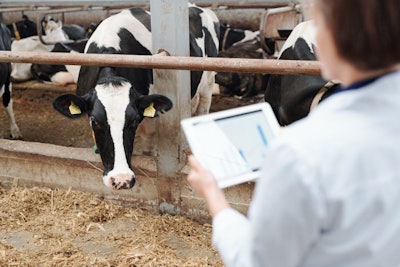
Decline of 818 dairy herds is the largest decline in the state’s history.
Wisconsin lost 818 dairy herds in 2019, a 10% decrease and the largest decline in the state’s history.
The state, known as America’s Dairyland, is second only to California in milk production. However, low milk prices over the past five years, along with other challenges, have forced farmers to leave the business.
“The price of milk hit an all-time high in the United States in 2014 at $25.62 per hundredweight, or cwt. The average price received by Wisconsin farmers at that point was a little lower, at $24.50, but was still a record high figure,” according to online information service WisContext. “But 2014’s high prices obscured a consequential long-term trend: since the early 1980s, inflation has far outpaced milk prices. The average milk price in Wisconsin in 1979 was $11.75, which in 2019 dollars would be $40.91. In fact, the effective prices received by dairy farmers since 2000 have been more similar to those their predecessors got during the depths of the Great Depression.”
The U.S. Department of Agriculture (USDA) reported that, on January 1, Wisconsin had 7,292 dairy herds, down from 8,110 a year prior. There are approximately 7,000 fewer dairy cows in Wisconsin than there were one year ago. While there are fewer herds, the size of the existing herds has grown to about 170 cows per herd vs. 100 cows per herd a decade ago. In 2018, Wisconsin produced 30.6 billion pounds of milk, an increase of more than 5 billion pounds from 2009.
Other challenges
Along with price challenges, U.S. dairy farmers have also faced weakening export demand, increased production in the EU and New Zealand, a trade war with China and changing consumer tastes. The industry also faces increased pressure from vertically integrated competitors such as grocery retailers and dairy cooperatives.
In the U.S, per capita consumption of milk decreased 22% between 2000 and 2016, offset primarily by increased interest in plant-based alternatives. According to the U.S. Department of Agriculture’s Margin Protection Plan for Dairy calculation, farm-level margins contracted 27% from 2017 to 2018. Dairy production, and feed production for dairies, has nonetheless continued to increase.
Two major U.S. dairy companies have file for bankruptcy in the past two months: Dean Foods in November and Borden Dairy Co. this month.
In October, Feed Strategy reported that, although the global dairy industry has faced significant challenges in 2019, the outlook for 2020 is relatively bright, according to the dairy and feed industry stakeholders interviewed.









